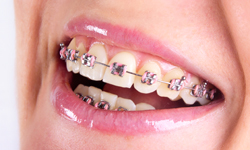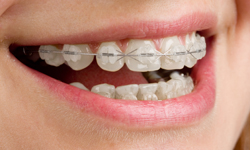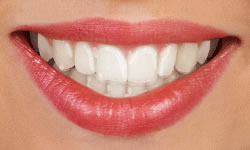TREATMENT OPTIONS

TRADITIONAL METAL BRACES
Traditional metal braces are the most common type of braces and are more comfortable today than ever before. Made of high-grade stainless steel, metal braces straighten your teeth using metal brackets and archwires. With metal braces, you have the option of adding colored elastics (rubber bands) for a more unique and colorful smile.

CLEAR (CERAMIC) BRACES
Ceramic braces are made of clear materials and are therefore less visible on your teeth than metal braces. For this reason, ceramic braces are used mainly on older teenagers and adult patients who have cosmetic concerns. While they are visually less prominent, they do require more attention to oral hygiene as ceramic braces are larger and are more brittle than their metal counterparts. For these reasons, ceramic braces tend to be used more on upper front teeth than on lower teeth

Personalized Clear Aligners
Imagine a braces treatment that doesn’t use wires or metal brackets, a treatment that is virtually pain free and doesn’t require you to change your current lifestyle. With our Personalized Clear Aligners, you can straighten your teeth and experience the benefits of a great smile without having to deal with a mouth full of metal! The Personalized Aligners are a series of clear, removable, comfortable aligners that straighten teeth in less time than traditional braces. Additionally, the complete process for making your aligners is done IN-HOUSE!
